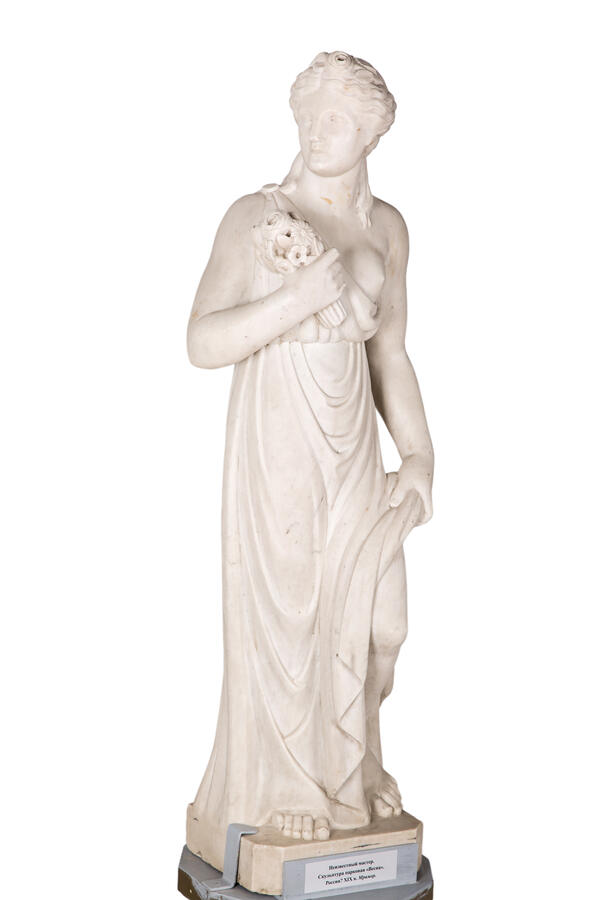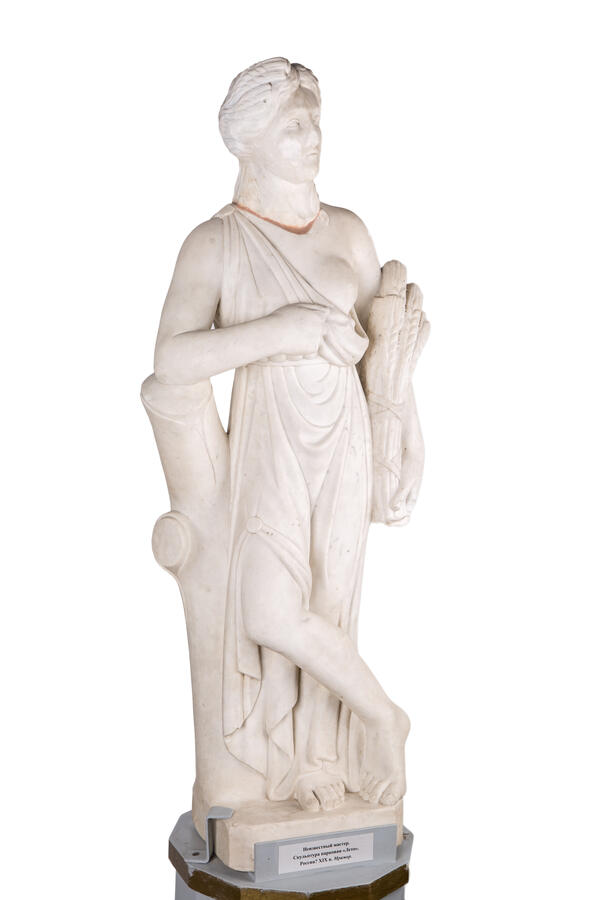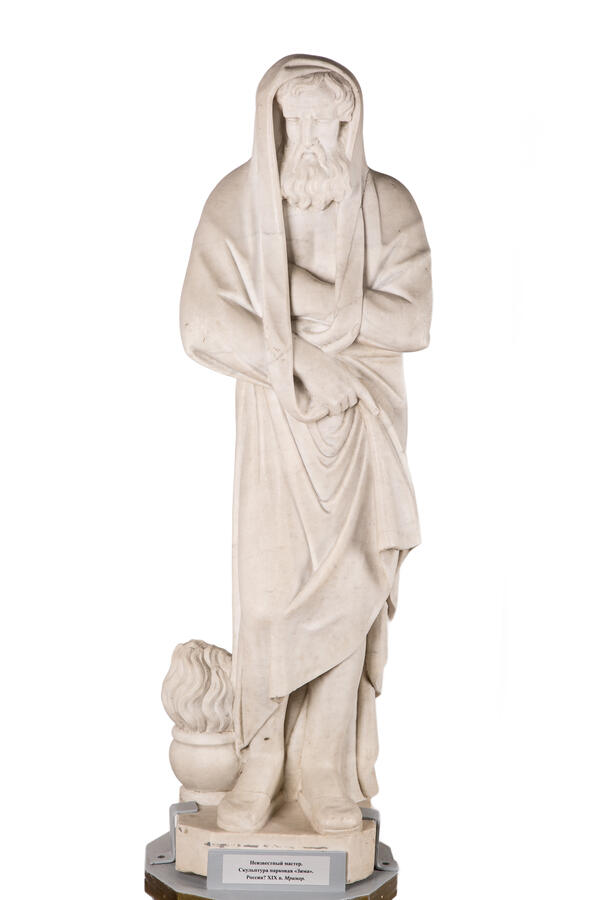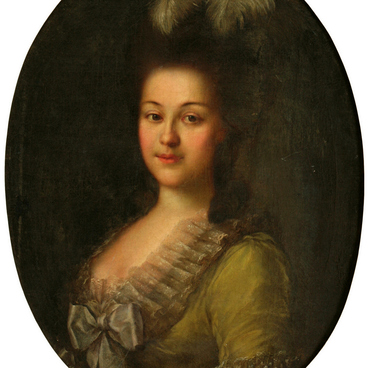It entered the museum in 1918 from the estate of Counts Uvarov “Red Mountain” in Karacharov. The statue is made of white marble in the classical style in the first half of the XIX century by an unknown artist. In height, it reaches a little more than one meter. The sculpture is part of an ensemble of four statues symbolizing the seasons, the other three statues are also in the Murom Museum. Thanks to the skill of an unknown sculptor, it is not difficult to guess what season these sculptures depict. So, an old man in a cloak symbolizes winter, a young girl with flowers is spring, a woman with a sheaf of heads is summer, and a man with a basket of ripe fruits is autumn.
Park sculpture "Spring"
Время создания
19th centuru
Место создания
Russia
Размер
101x34x29,5 cm
Техника
marble, sculpting
Коллекция
Выставка
0
Открыть в приложении#2
#4
The park sculpture “Summer”
#5
The park sculpture “Winter”
#6
The park sculpture “Autumn”
#7
It is not possible to determine exactly where these sculptures were located on the estate. The palace was rebuilt by Alexey Sergeyevich Uvarov in the middle of the XIX century, connecting the wings with the main house with semicircular galleries. His wife Praskovya Sergeevna was already improving the estate at the beginning of the XX century. There are few photos of the garden and the interiors of the house. Judging by the small size of the “Seasons” sculptures, they could have been placed in the winter garden in galleries.
The history of park sculpture is quite interesting. The ancient Greeks were the first to decorate their gardens. The first marble statues in the parks of Hellas were decorative and entertaining. A few centuries later, when Ancient Rome conquered Greece, local garden statues became its war trophies. The Rome inhabitants liked the Greek statues so much that Romans began to copy them. During the reign of Peter I, the tradition of decorating gardens with sculptures came to Russia. More than a hundred sculptures of ancient gods, various allegories and Roman emperors were brought from Italy and places in St. Petersburg in the Summer Garden and Petergof. The works by such famous masters as Lorenzo Bernini and Pietro Baratta were among them. Russian nobles began to locate sculptures in their estates. The statuehad its dedicated place — a corner of the garden where it looked majestic and solemn.
The history of park sculpture is quite interesting. The ancient Greeks were the first to decorate their gardens. The first marble statues in the parks of Hellas were decorative and entertaining. A few centuries later, when Ancient Rome conquered Greece, local garden statues became its war trophies. The Rome inhabitants liked the Greek statues so much that Romans began to copy them. During the reign of Peter I, the tradition of decorating gardens with sculptures came to Russia. More than a hundred sculptures of ancient gods, various allegories and Roman emperors were brought from Italy and places in St. Petersburg in the Summer Garden and Petergof. The works by such famous masters as Lorenzo Bernini and Pietro Baratta were among them. Russian nobles began to locate sculptures in their estates. The statuehad its dedicated place — a corner of the garden where it looked majestic and solemn.
читать дальшескрыть
00:00
00:00
1x
Park sculpture "Spring"
Время создания
19th centuru
Место создания
Russia
Размер
101x34x29,5 cm
Техника
marble, sculpting
Коллекция
Выставка
0
Открыть в приложении
Поделиться






